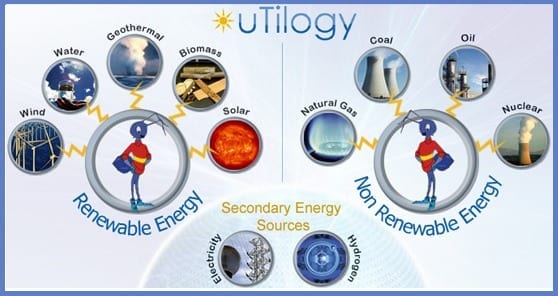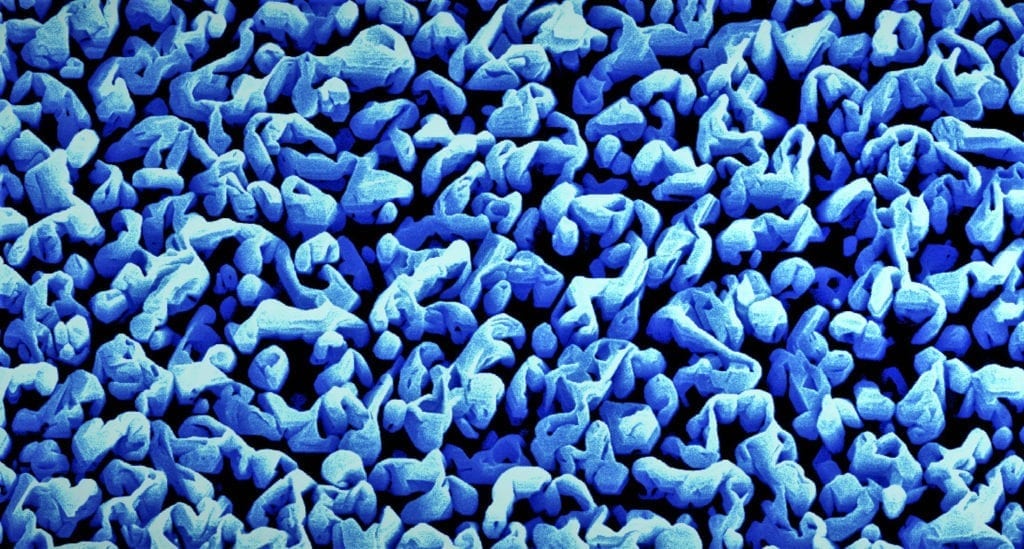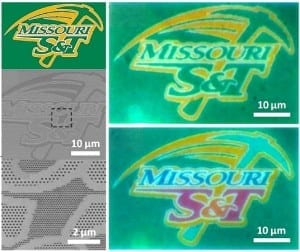
Stanford engineers develop state-by-state plan to convert U.S. to 100% clean, renewable energy by 2050
Mark Z. Jacobson and colleagues show that it’s technically possible for each state to replace fossil fuel energy with entirely clean, renewable energy.
One potential way to combat ongoing climate change, eliminate air pollution mortality, create jobs and stabilize energy prices involves converting the world’s entire energy infrastructure to run on clean, renewable energy.
This is a daunting challenge. But now, in a new study, Mark Z. Jacobson, a professor of civil and environmental engineering at Stanford, and colleagues, including U.C. Berkeley researcher Mark Delucchi, are the first to outline how each of the 50 states can achieve such a transition by 2050. The 50 individual state plans call for aggressive changes to both infrastructure and the ways we currently consume energy, but indicate that the conversion is technically and economically possible through the wide-scale implementation of existing technologies.
“The main barriers are social, political and getting industries to change. One way to overcome the barriers is to inform people about what is possible,” Jacobson said. “By showing that it’s technologically and economically possible, this study could reduce the barriers to a large scale transformation.”
The study is published in the online edition of Energy and Environmental Sciences. An interactive map summarizing the plans for each state is available at www.thesolutionsproject.org.
Jacobson and his colleagues started by taking a close look at the current energy demands of each state, and how those demands would change under business-as-usual conditions by the year 2050. To create a full picture of energy use in each state, they examined energy usage in four sectors: residential, commercial, industrial and transportation.
For each sector, they then analyzed the current amount and source of the fuel consumed – coal, oil, gas, nuclear, renewables – and calculated the fuel demands if all fuel usage were replaced with electricity. This is a significantly challenging step – it assumes that all the cars on the road become electric, and that homes and industry convert to fully electrified heating and cooling systems. But Jacobson said that their calculations were based on integrating existing technology, and the energy savings would be significant.
“When we did this across all 50 states, we saw a 39 percent reduction in total end-use power demand by the year 2050,” Jacobson said. “About 6 percentage points of that is gained through efficiency improvements to infrastructure, but the bulk is the result of replacing current sources and uses of combustion energy with electricity.”
The next step involved figuring out how to power the new electric grid. The researchers focused on meeting each state’s new power demands using only the renewable energies – wind, solar, geothermal, hydroelectric, and tiny amounts of tidal and wave – available to each state.
They analyzed each state’s sun exposure, and how many south-facing, non-shaded rooftops could accommodate solar panels. They developed and consulted wind maps and determined whether local offshore wind turbines were an option. Geothermal energy was available at a reasonable cost for only 13 states. The plan calls for virtually no new hydroelectric dams, but does account for energy gains from improving the efficiency of existing dams.
The report lays out individual roadmaps for each state to achieve an 80 percent transition by 2030, and a full conversion by 2050. Jacobson said that several states are already on their way. Washington state, for instance, could make the switch to full renewables relatively quickly, thanks to the fact that more than 70 percent of its current electricity comes from existing hydroelectric sources. That translates to about 35 percent of the state’s all-purpose power if Washington were 100-percent electrified; wind and solar could fill most of the remainder.
The Latest on: Clean renewable energy plan
[google_news title=”” keyword=”Clean renewable energy plan” num_posts=”10″ blurb_length=”0″ show_thumb=”left”]
via Google News
The Latest on: Clean renewable energy plan
- Clean Energy Sector Ignoring Growing Cybersecurity Threat, Experts Warnon May 2, 2024 at 1:00 pm
The United States faces an intensifying cyberattack threat from China, particularly targeting critical infrastructure like the energy grid, yet cybersecurity measures are largely overlooked in the ...
- Microsoft makes renewable energy deal with Canada's Brookfieldon May 2, 2024 at 12:58 am
Microsoft and Canada's Brookfield Asset Management have struck an agreement for the development of renewable energy that could make one of the biggest corporate purchases of green energy to date, the ...
- Biden administration gives more than $26 million in clean energy grantson May 1, 2024 at 4:08 pm
The Biden administration said Wednesday that it will give more than $26.9 million in grants in support of clean energy projects across the country. “Energy efficient upgrades are a surefire way to ...
- UK Needs to Double Clean Energy Deployment to Meet Net Zero Targeton May 1, 2024 at 1:00 pm
Despite significant advancements in its renewable energy sector, the United Kingdom is lagging way behind where it needs to be in terms of clean energy development ... as well as delaying plans to ...
- 'Basel III' bank rules could pose unexpected threat to Biden's green energy planson May 1, 2024 at 12:20 pm
Renewable energy groups and congressional Democrats are raising alarms about potential harm to clean energy goals from a proposed banking regulation.
- Microsoft, Brookfield to partner on renewable energy projectson May 1, 2024 at 12:35 am
Canada's Brookfield Asset Management and technology giant Microsoft will develop new wind and solar farms in an attempt to bring over 10.5 gigawatts of new renewable energy capacity, the companies ...
- How Big Data Centers Are Slowing the Shift to Clean Energyon April 29, 2024 at 6:00 am
An explosion of so-called hyperscale data centers in places such as Northern Virginia has upended plans by electric utilities to cut the use of fossil fuels. In some areas, that means burning coal for ...
- Investing in Renewable Energy Stockson April 29, 2024 at 4:12 am
The utility unveiled its Real Zero plan in 2022 to eliminate ... Although the rising tide of clean energy should lift all boats, the top renewable energy stocks should generate some of the best ...
- Virginia can still meet clean energy goalson April 29, 2024 at 3:00 am
Following the General Assembly’s failure either to rein in the explosive growth of power-hungry data centers or to remove obstacles to increasing the supply of renewable energy in Virginia, a lot of ...
- California just went 9.25 hours using only renewable energyon April 23, 2024 at 6:26 am
Nearly every day for the last six weeks, its grid has run on solar, wind, and other clean energy sources for hours at a time.
via Bing News










